What does the French flag look like? For many people, this is an easy question. According to Article 2 of the French Constitution dating from the 28th of September 1958, the national emblem of France is the Tricolour flag. Blue, white, red. Interestingly there is more to tell about the national flag of France. What do the colours of the French flag stand for? And what is the meaning of the flag of France? Here are some insights on the French national flag that – I hope – will arouse your curiosity! 🇫🇷
The French flag before the French Revolution
During the reign of the Valois dynasty, the royal banner consisted of three fleurs-de-lys on a blue field. The French flag looked like this:
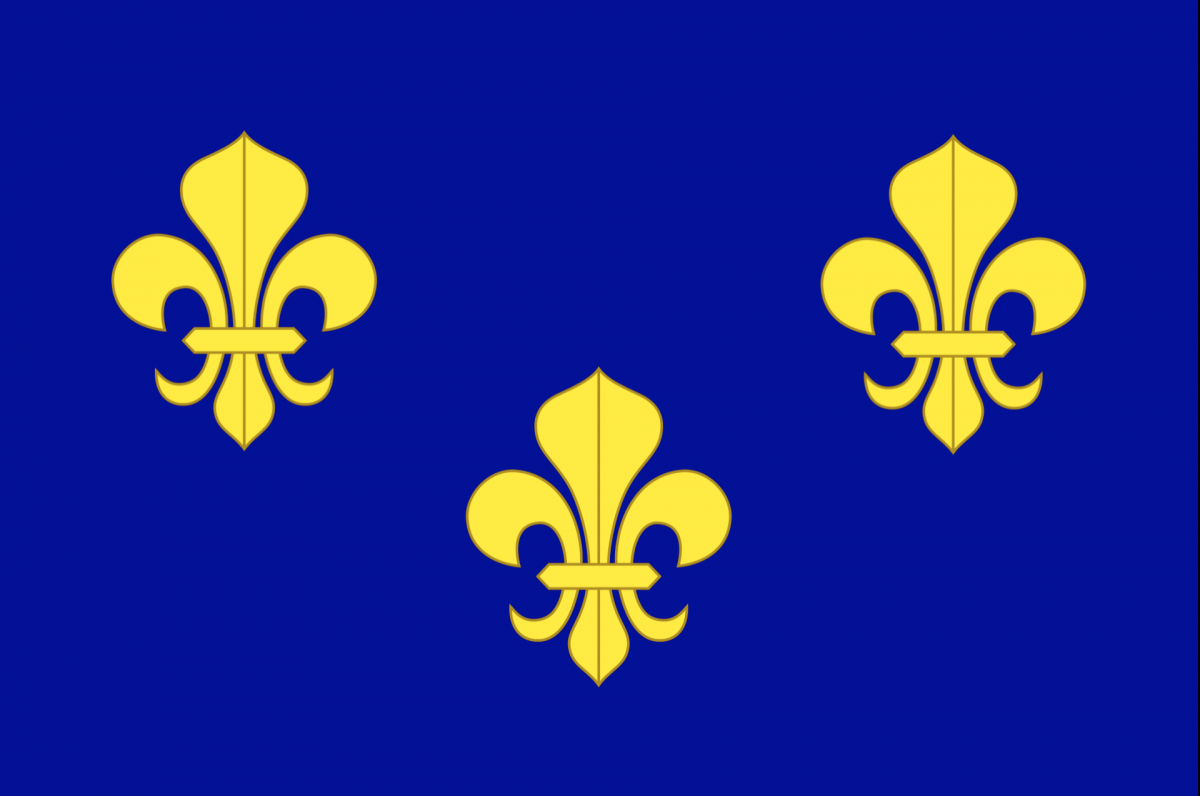
Legend has it that the Fleurs-de-Lys (lilies) originated at the baptism of Clovis in 496 AD. The first kings of the Franks would have replaced the three toads that adorned his shield with three lilies given by an angel.
In 1376, King Charles V placed the kingdom of France under the protection of the Virgin (the lily is a symbol of Mary) and the Trinity (three lilies on the arms of France).
There are many historic places in France where you can still see the three Lys-de-France on a blue background, such as in Place Stanislas, Nancy. This royal square was built in the mid-18th century to the glory of Louis XV, King of France.
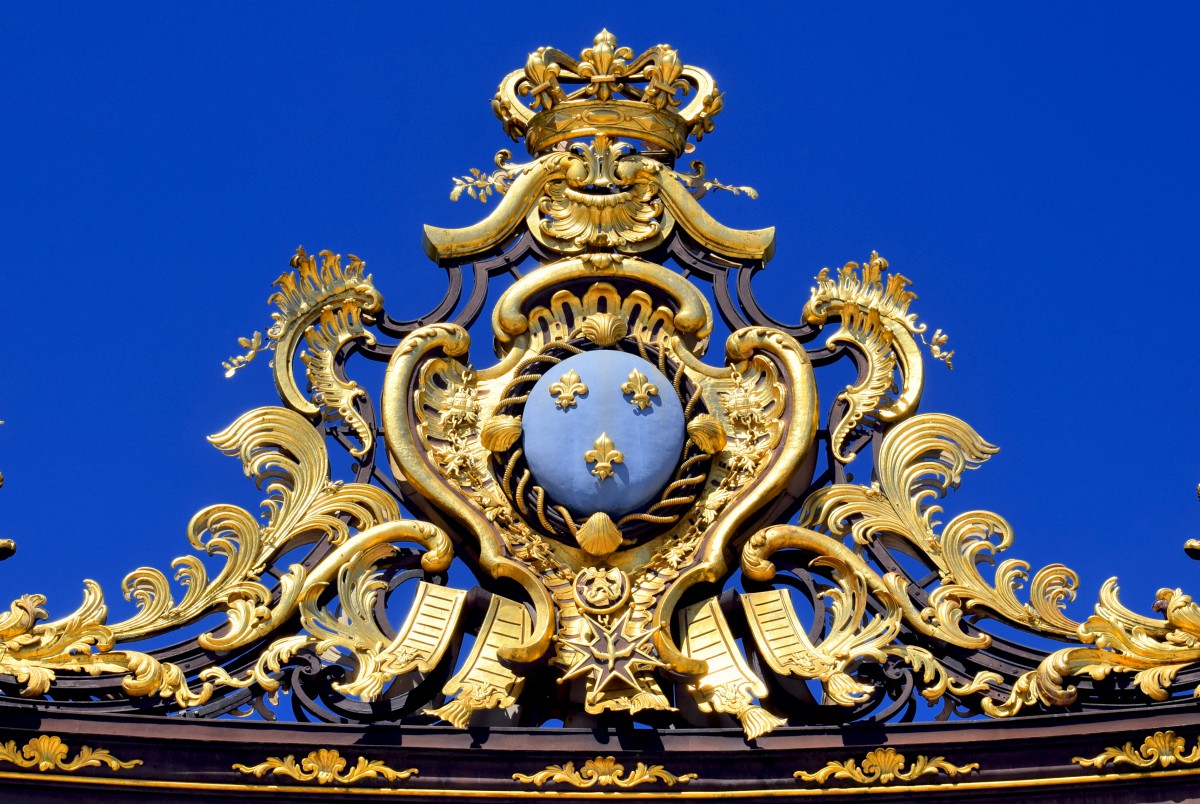
And what about the flag of Quebec?
France’s Fleur-de-Lys are also an important feature in the flag of Quebec:

Nicknamed the Fleurdelisé (the Lily-flowered), the flag of Quebec is designed with a white cross on a blue background that originates from the royal flags of the Kingdom of France. Four white fleurs-de-lis are dispatched on each side of the flag.
The Quebec flag was first shown on the 21st of January 1948. Two years later, the Quebec Parliament adopted it on the 9th March 1950.
What are the French flag colours?
The present-day national flag of France features three vertical colour bands:
- blue (HTML #0055A4 / RGB 0,85,164 / CMYK 100.89.0.0)
- white (HTML #FFFFF / RGB 255,255,255 / CMYK 0.0.0.0)
- red (HTML #EF4135 / RGB 239,65,53 / CMYK 0.87.60.0)
(Retrieved from: Pays-du-Monde.fr)
What does the French flag look like?
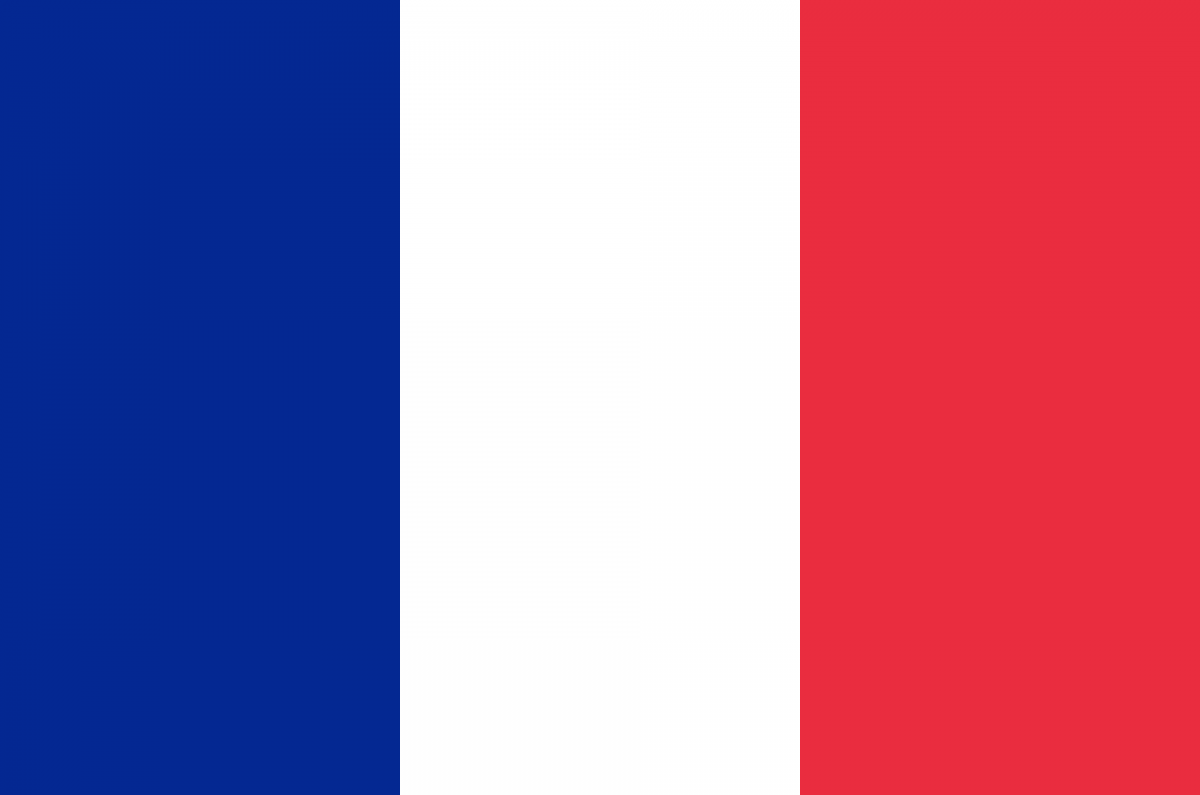
I took a few flags of France images in Paris:
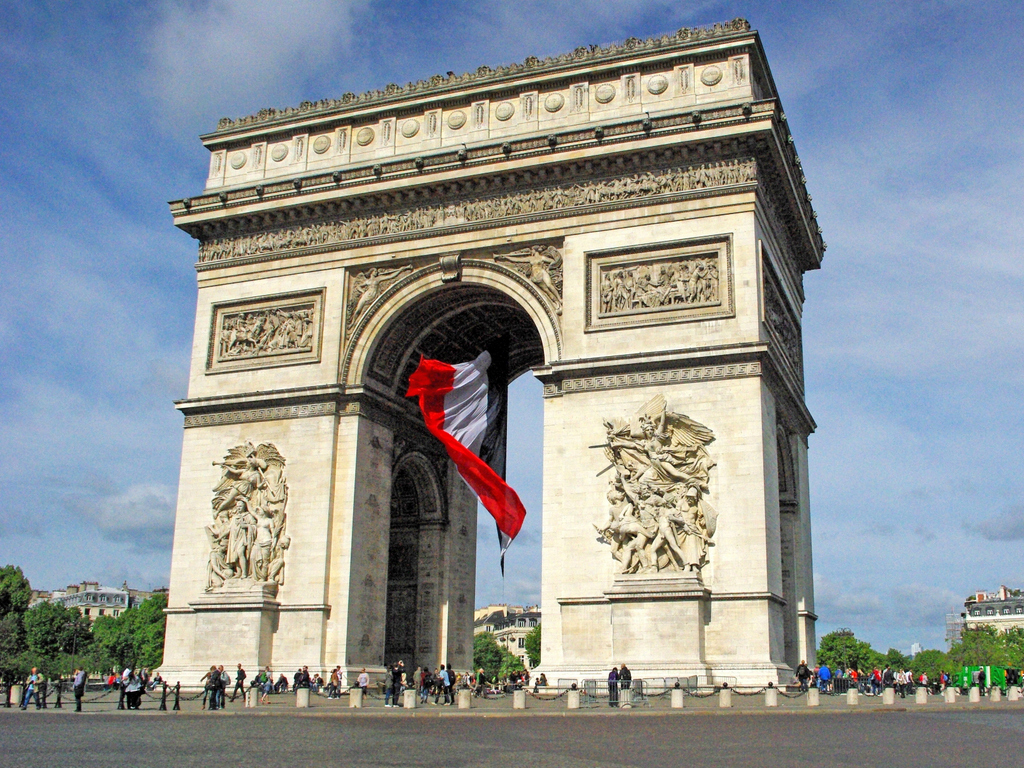
The huge French flag that flies under the Arc de Triomphe is the largest. It is 9 metres by 13,50 metres.
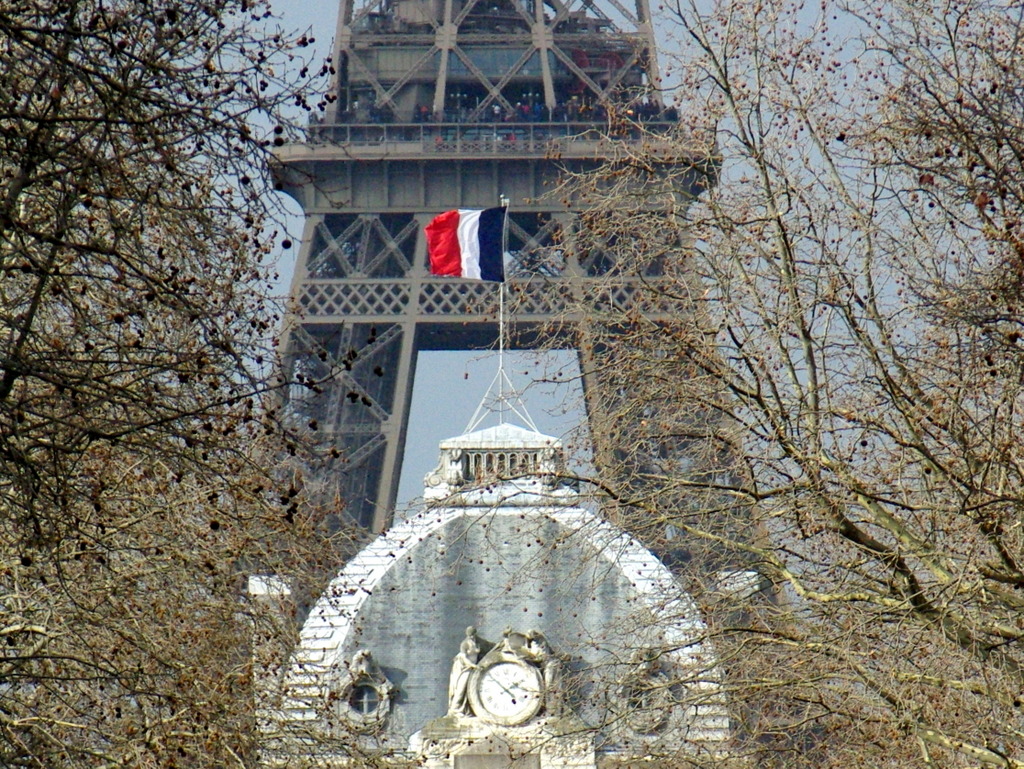
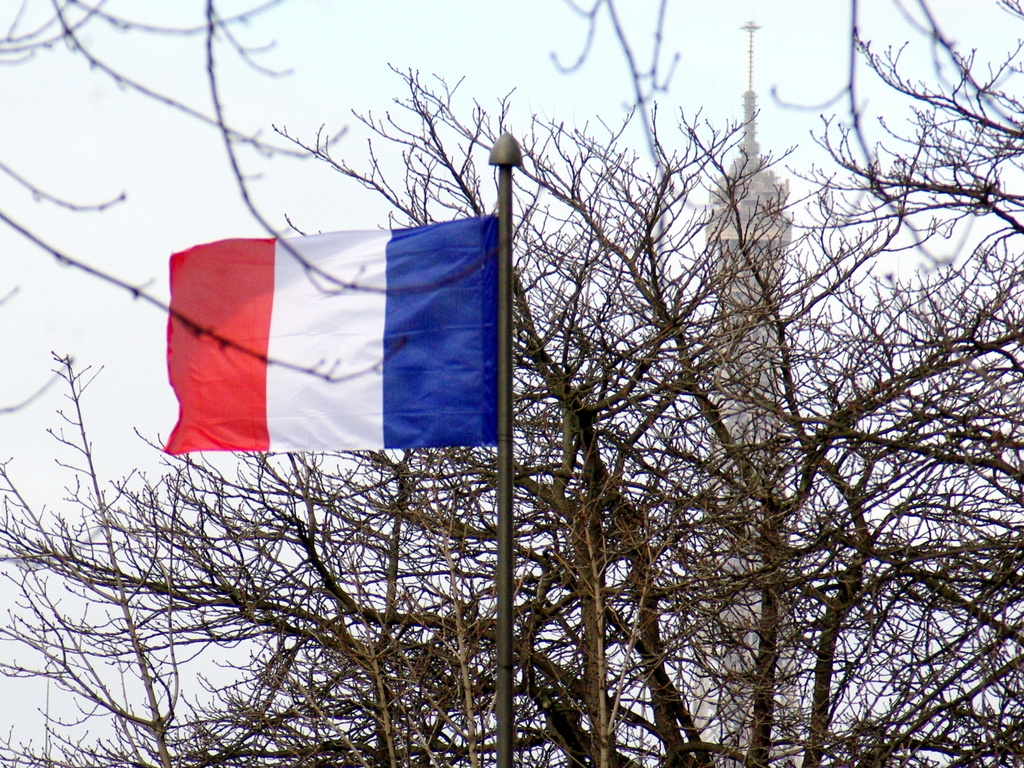
More French flag images shot in provincial France:

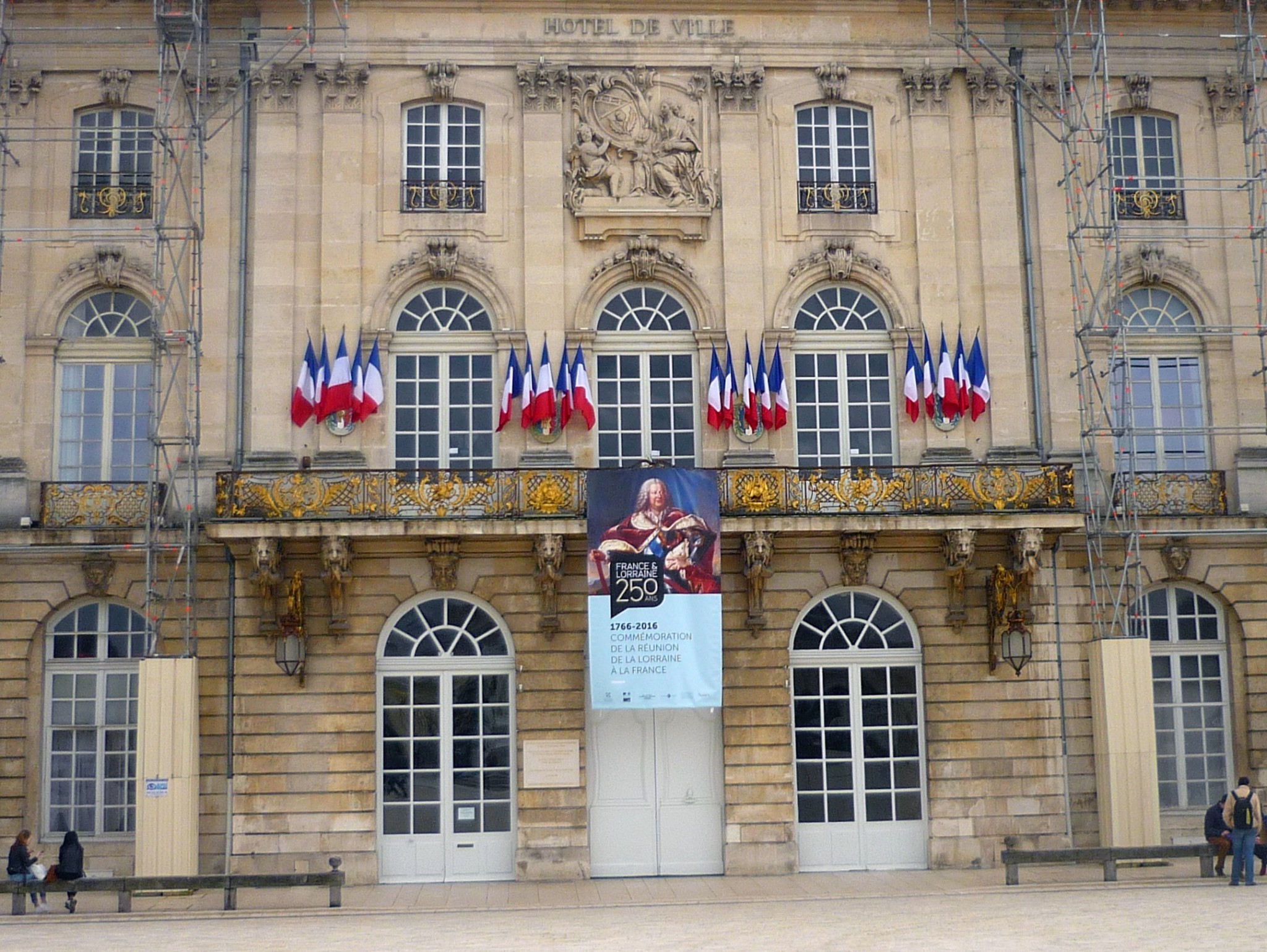
Why did the French change their flag?
The national flag of France finds its origins in the French Revolution.
The first version of a flag was adopted in 1790 with the three stripes red-white-blue.
Indeed, from 1790 to 1792, there was no national flag in France. The naval jack of France (a flag flown at the front of a vessel, known as the Pavillon de beaupré) was red-white-blue:

On the 15th of February 1794, a decree detailed the position of the coloured stripes:
‘The banner and national flag will be composed of the three national colours, in three equal bands, the blue one being attached to the flag hilt, the white being in the middle and the red floating’.
In 1794 the Convention commissioned Jacques-Louis David (1748-1825) for the new flag.
What is the meaning of the French flag?
The blue and red colours refer to the coat of arms of Paris and the white to the royalty.
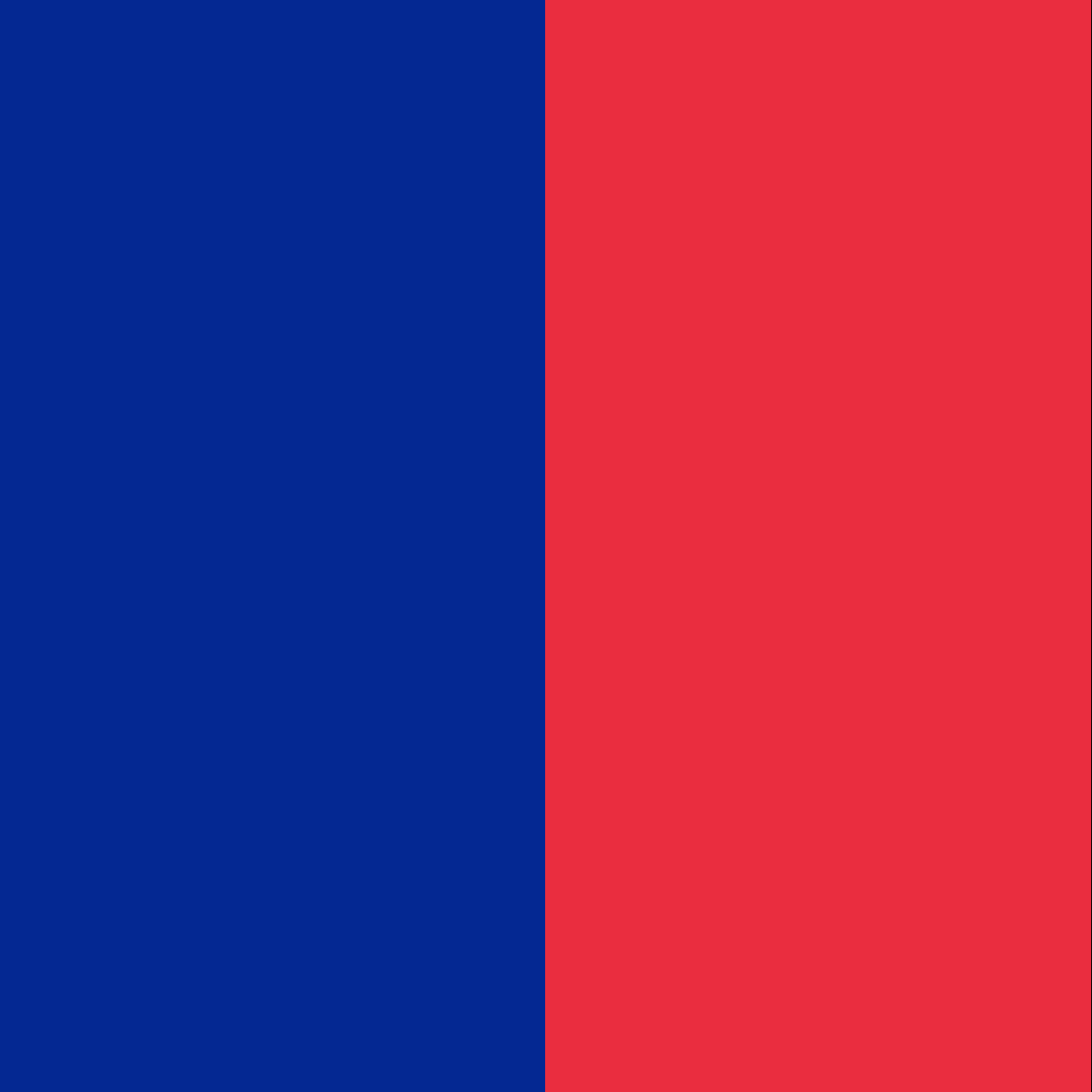
There is a great deal of symbolism too!
- For some, blue and red are the colours of the Virgin Mary, the Patron saint of France.
- For others, blue refers to the bourgeoisie, white to the clergy and red to the nobility.
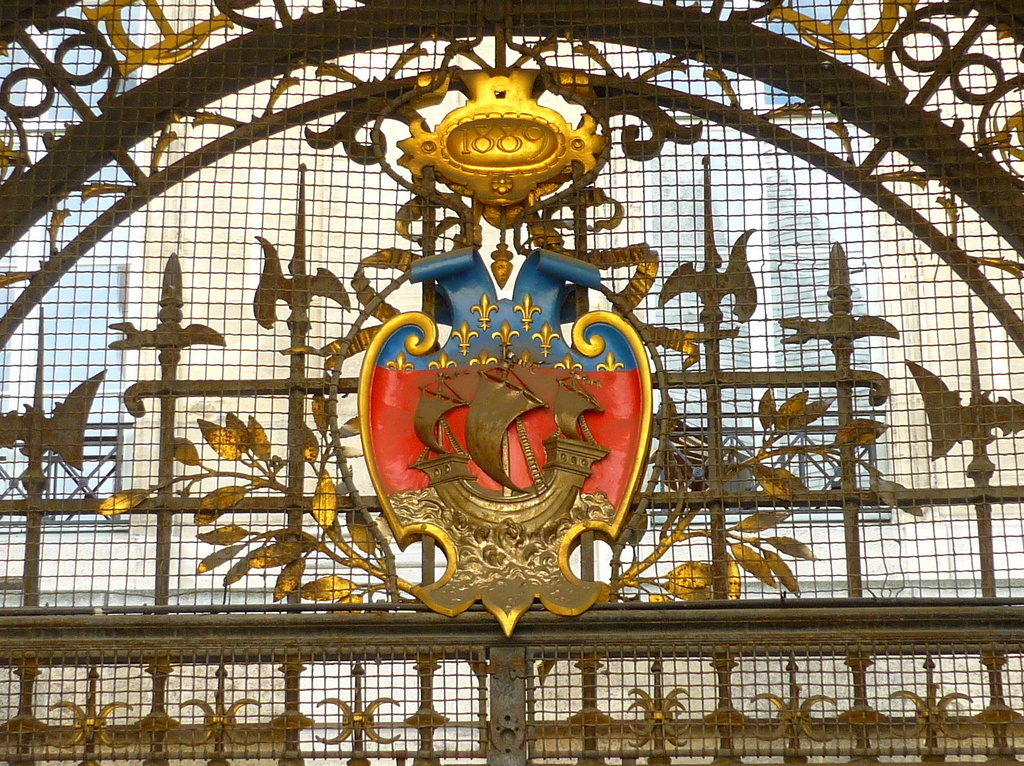
After the defeat of Napoleon I in 1815, the restoration of the Bourbon dynasty (Restauration des Bourbons) replaced the Tricolour with a white flag.
![Royal flag of France during the Bourbon Restoration © Sodacan - licence [CC BY-SA 4.0] from Wikimedia Commons](https://frenchmoments.eu/wp-content/uploads/2015/05/Royal-flag-of-France-during-the-Bourbon-Restoration-©-Sodacan-licence-CC-BY-SA-4.0-from-Wikimedia-Commons.png)
In 1976, President Valéry Giscard d’Estaing slightly modified the blue and red colours to make them lighter.
Where is the oldest French flag?
Guess where the oldest (and largest) French flag in existence is?… in England!
On the 18th of February 1800, the British captured the flag from the French warship Le Généreux. The city of Norwich, England inherited the historic flag. It is still there to this day.
That French flag is the size of a tennis court. It is believed to be one of the largest known French flags with impressive dimensions: 16 metres by 8.3 metres.
Where to see the French flag today?
The national flag of France flies on all French public buildings including:
- ministries,
- French embassies and consulates,
- town-halls,
- prefectures and subprefectures buildings,
- some museums,
- historic sites,
- schools, and
- war memorials.
In French town-halls and some public buildings, the European and regional flats join the national flag of France. Here in Annecy, in the historic province of Savoie:
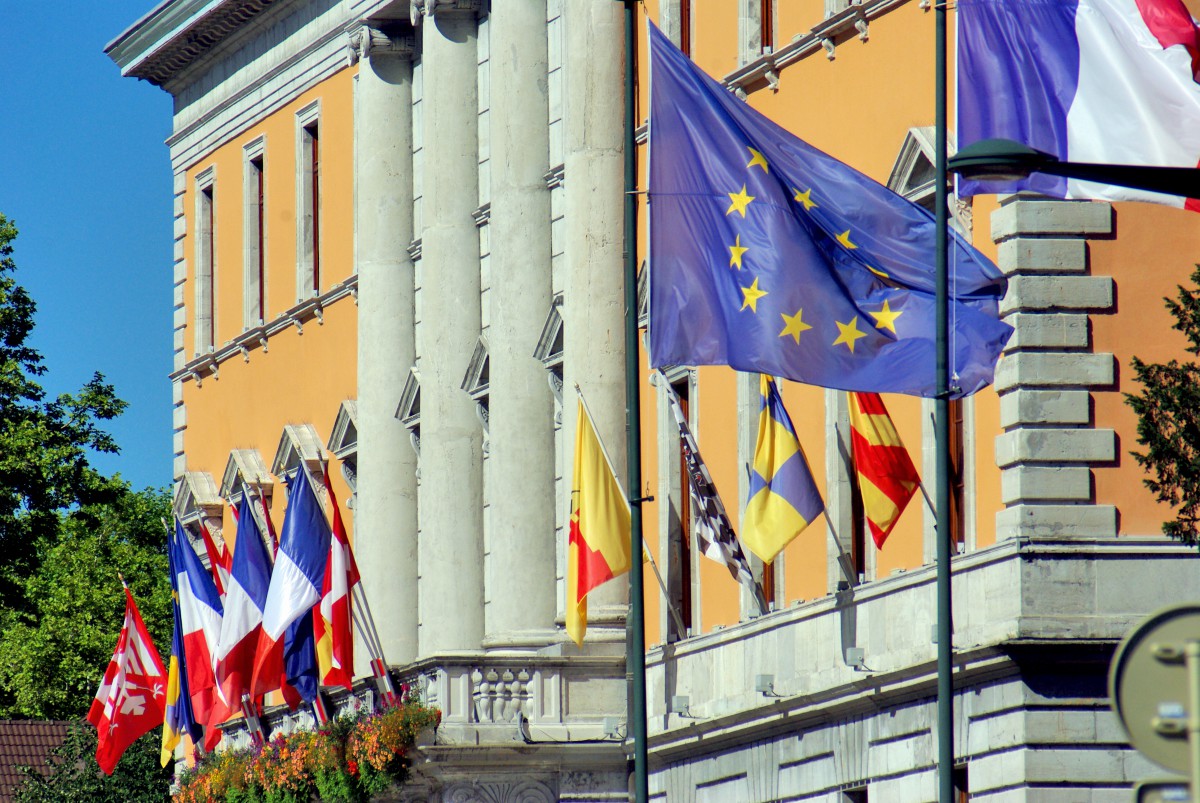
The French flag floating above the Grand-Palais in Paris:
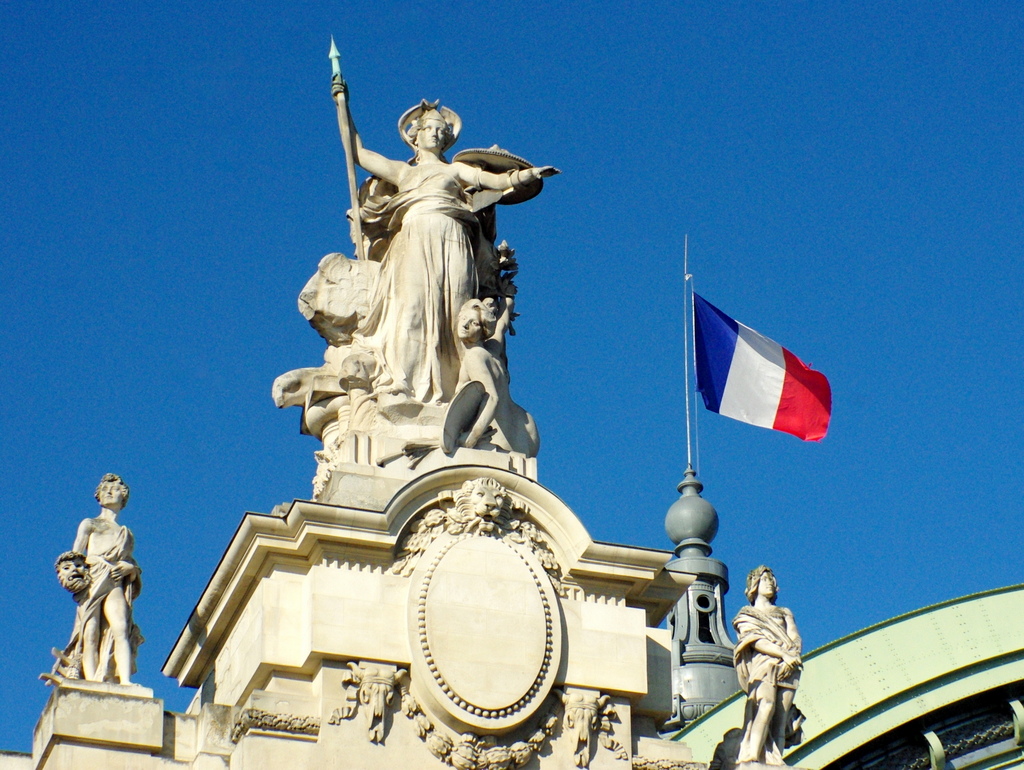
French flags at the Ministry of Justice, Place Vendôme, Paris:

The national flag of France and the European flag at the Banque de France (France’s central bank) in Paris:
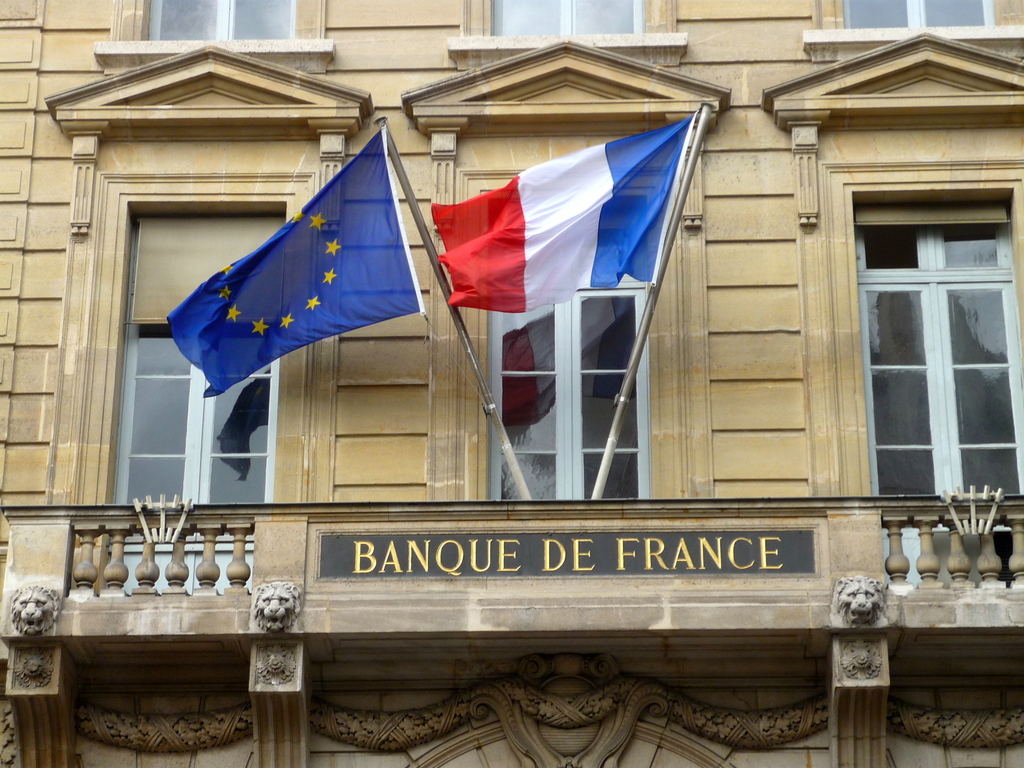
It is quite rare to see the French flag inside a church in France… The cathedral of Saint-Louis-des-Invalides, Paris is an exception as it is the soldiers’ church:
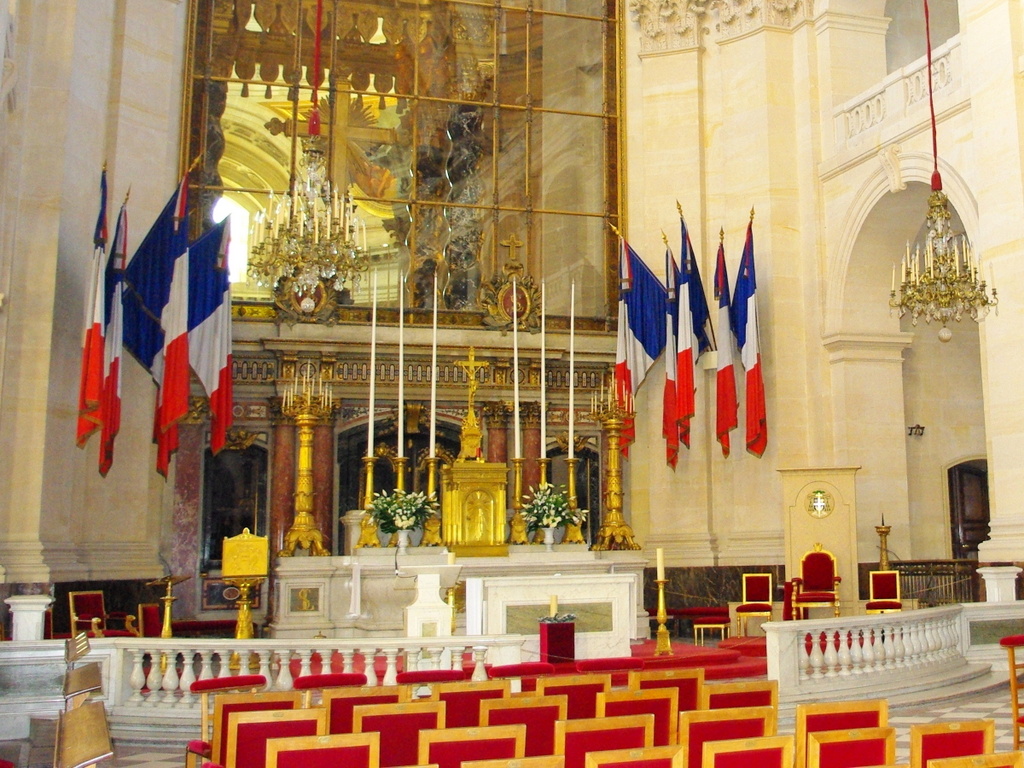
A French flag floating above the roofs of Paris with the business district of La Défense in the background:

The Tricolour and the European flags at the Palais Garnier, Paris’ historic opera house:
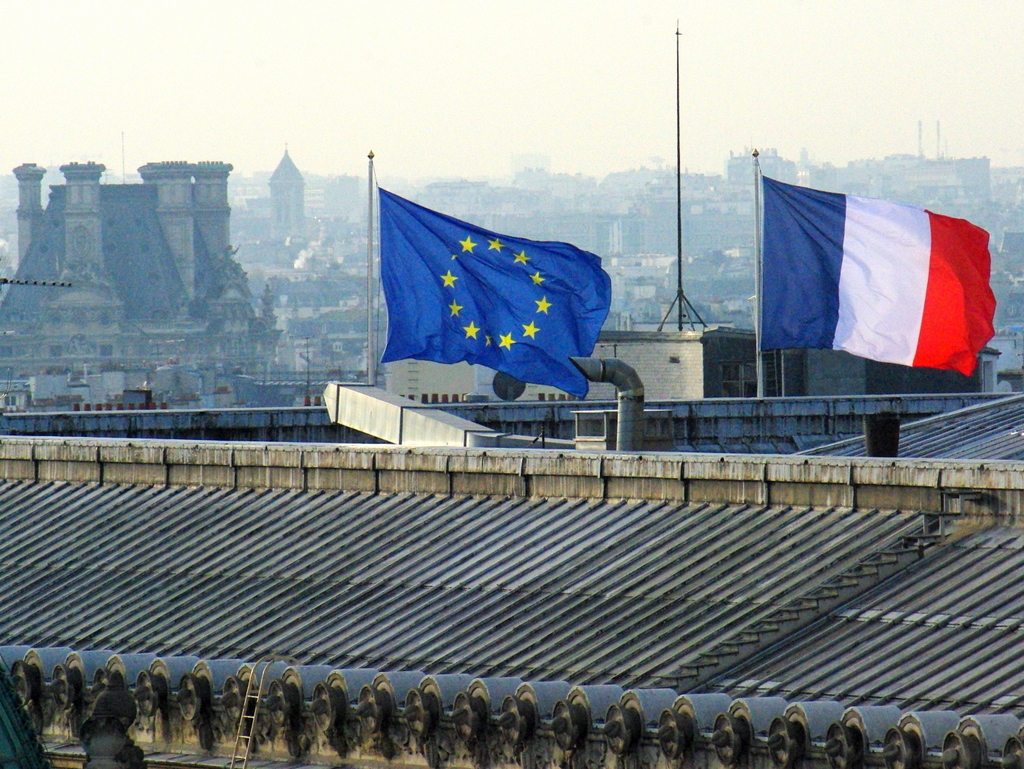
The French flag floating above the Palais du Luxembourg, Seat of the French Senate:
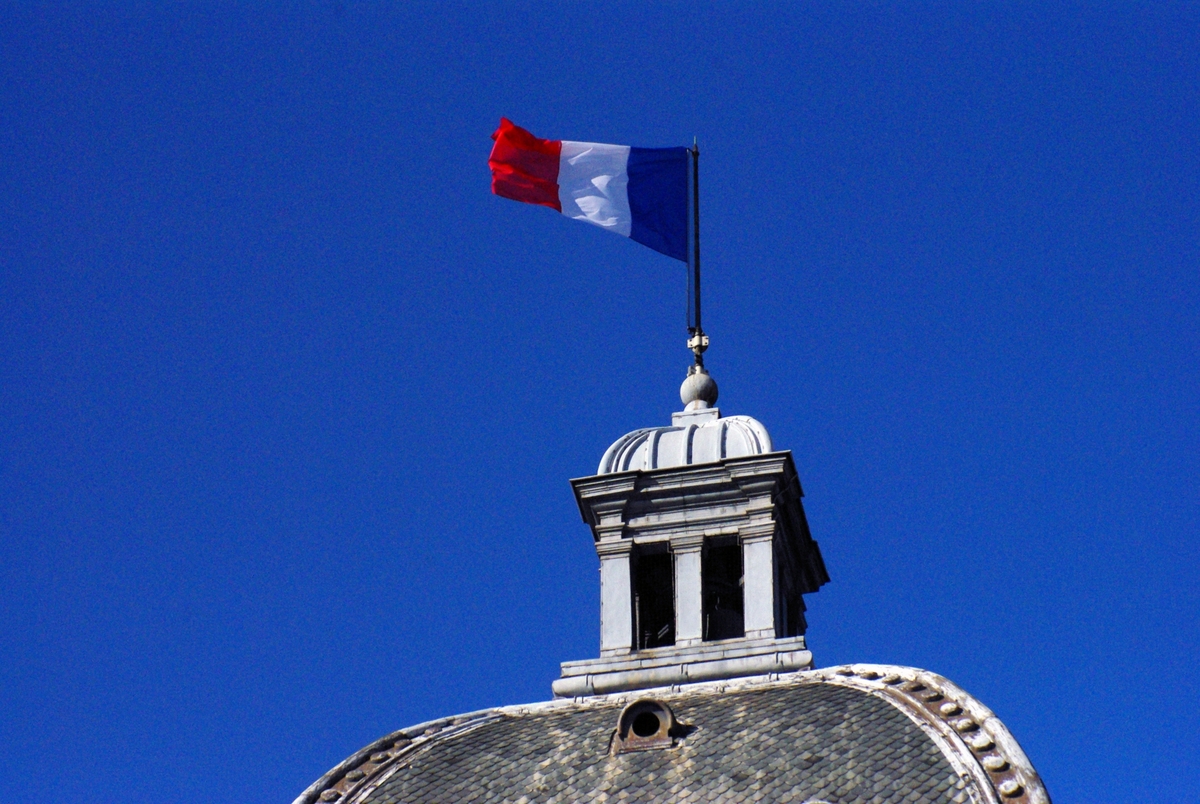
The French flag at the town-hall of Saint-Rémy-de-Provence:

A French flag floating at a historic house in Saint-Germain-en-Laye:
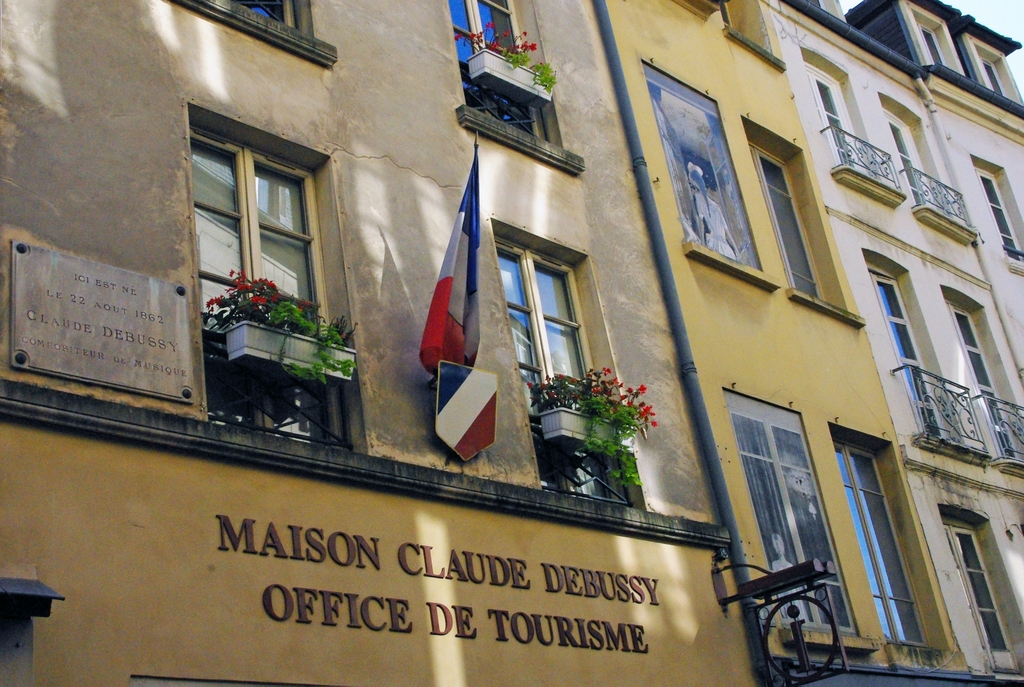
The President of the Republic and the French flag
When the President of the Republic speaks publicly on television, the French and European flags are traditionally placed behind him.
Below is a TV screen capture of President François Hollande’s speech on the 8th May 2015 for Victory in Europe Day:
And below the official portrait of President Emmanuel Macron displayed in every town-halls across France:
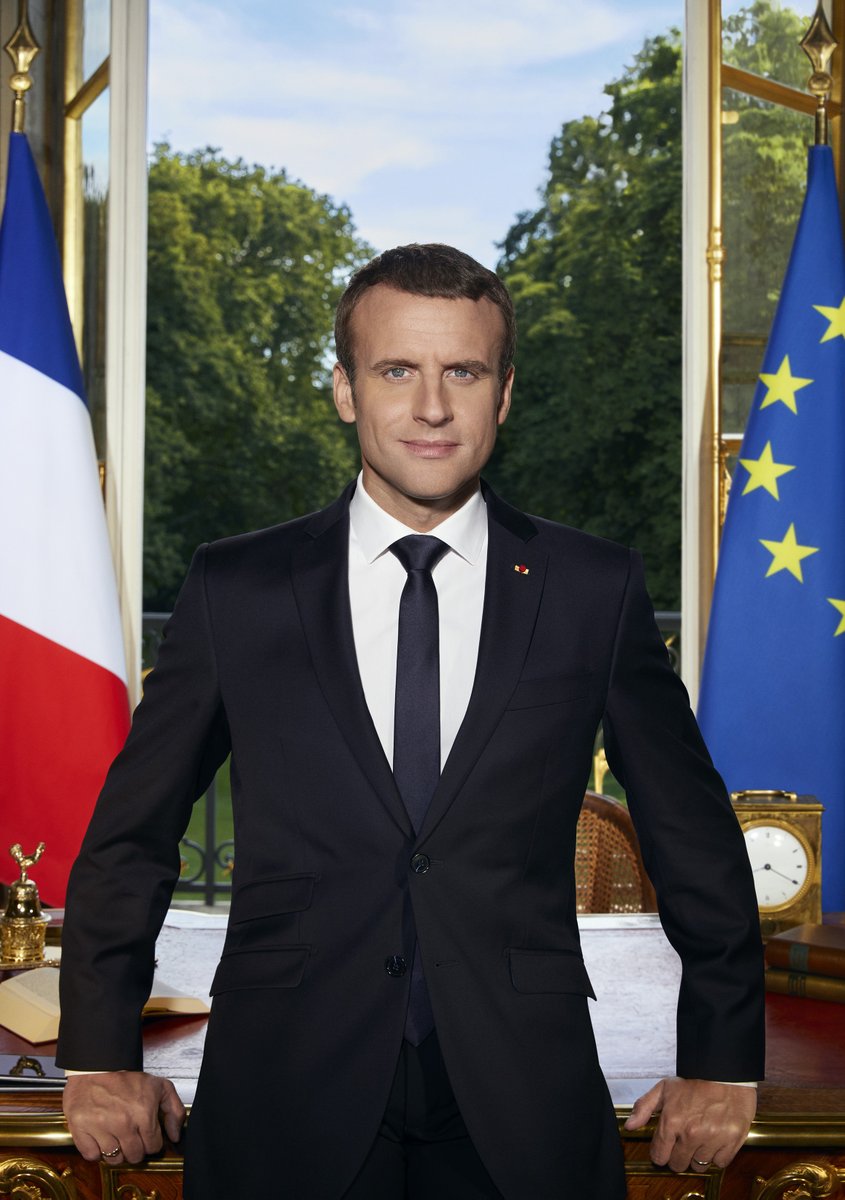
The sash of the mayors of France
Members of Parliament and mayors wear a sash on the right shoulder with the colours of the French flag in public ceremonial events (weddings, war commemorations…).
I was fortunate to wear one of them just for the occasion of the photo!
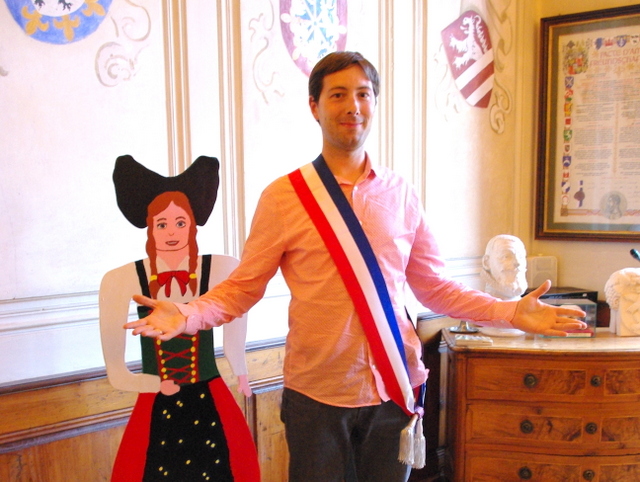
The French flag emoji
The flag of France emoji was added to Emoji 1.0 in 2015. It is a sequence of the Regional Indicator Symbol Letter F and Regional Indicator Symbol Letter R emojis. These are displayed as a single emoji on supported platforms.
Here it is 🇫🇷🇫🇷🇫🇷🇫🇷🇫🇷🇫🇷🇫🇷🇫🇷🇫🇷🇫🇷🇫🇷🇫🇷
Find out more about the French flag emoji!
How do we say French flag in French?
- French Flag: Flag is “drapeau” (masculine noun) and French is “français” (adjective). To say “French Flag” 🇫🇷 “drapeau français”. You can add the definite article “le” (masculine): “le drapeau français”.
- The flag of France 🇫🇷 “drapeau de la France”.
- The Tricolour/Tricolor 🇫🇷 “le Tricolore”.
- The Blue-White-Red flag 🇫🇷 “le drapeau bleu-blanc-rouge”.
- The national flag of France 🇫🇷 “le drapeau national de la France”.
- Flag at half-staff 🇫🇷 “drapeau en berne”.
What about flag desecration in France?
Flag desecration is an offence punishable by French law (a fine of €7,500 and 6 months imprisonment if committed by a group).
The colours of the French flag in the sky of Paris!
The Patrouille Acrobatique de France (French Acrobatic Patrol), also known as the Patrouille de France traditionally opens the Bastille Day military parade in Paris. Each year the 9 pilots produce a plume of blue, white and red smoke in the sky of Paris.

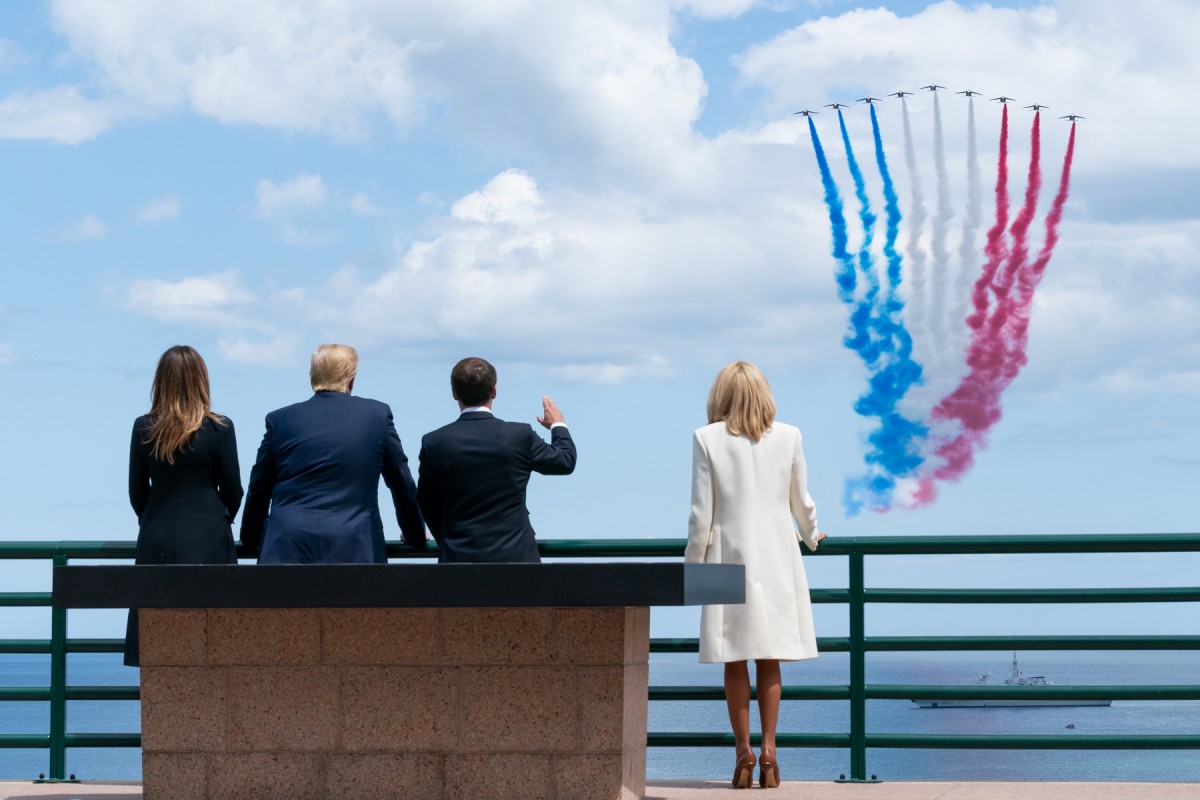
The French flag in the painting
Flag of France images from famous paintings:
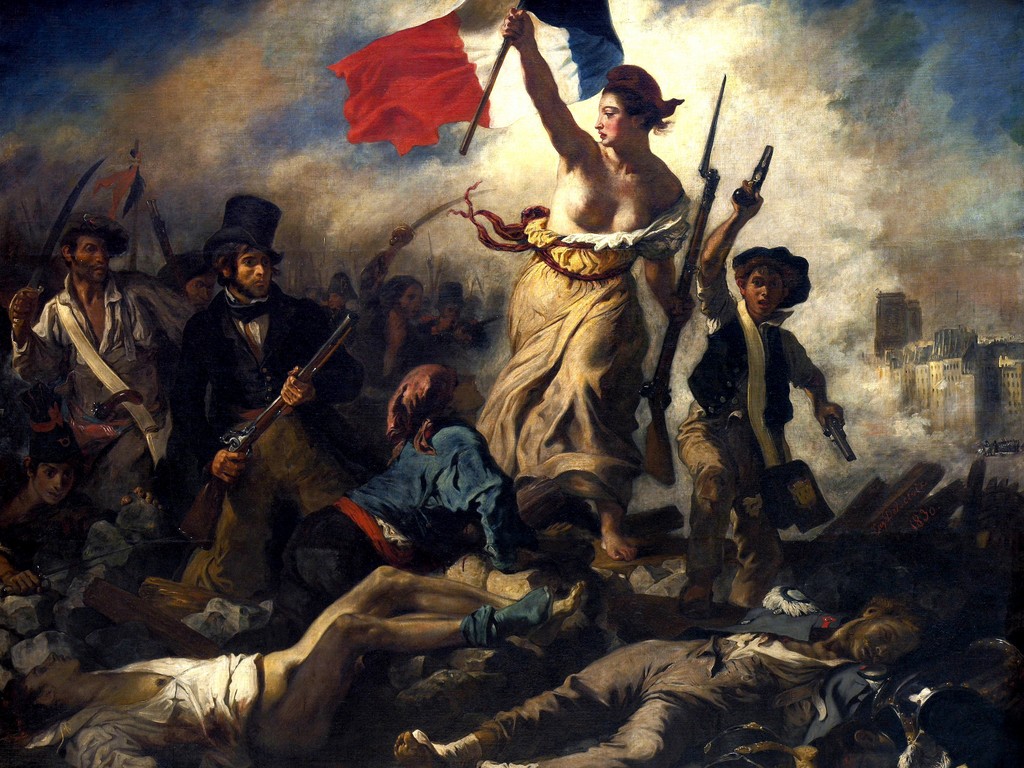
The Siege of Paris, by Ernest Meissonnier (1884):
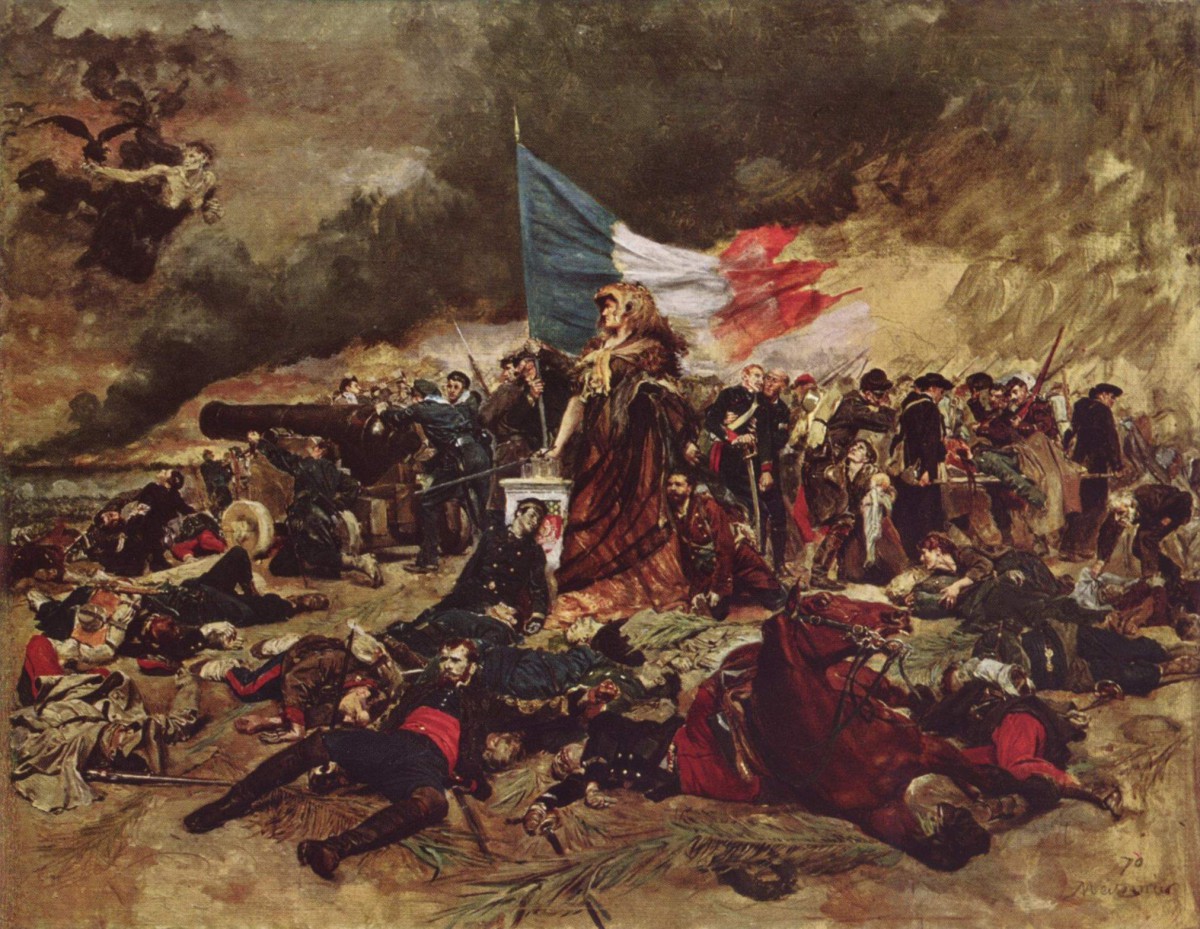
Serment de l’Armée fait à l’Empereur après la Distribution des Aigles au Champ de Mars, 5 décembre 1804, [The Distribution of the Eagle Standards] by Jacques-Louis David (1810):

L’Atelier à Marseille, by Albert Marquet (1916):

Terrace at Sainte-Adresse, by Claude Monet (1867):

La Rue Montorgueil, by Claude Monet (1878):
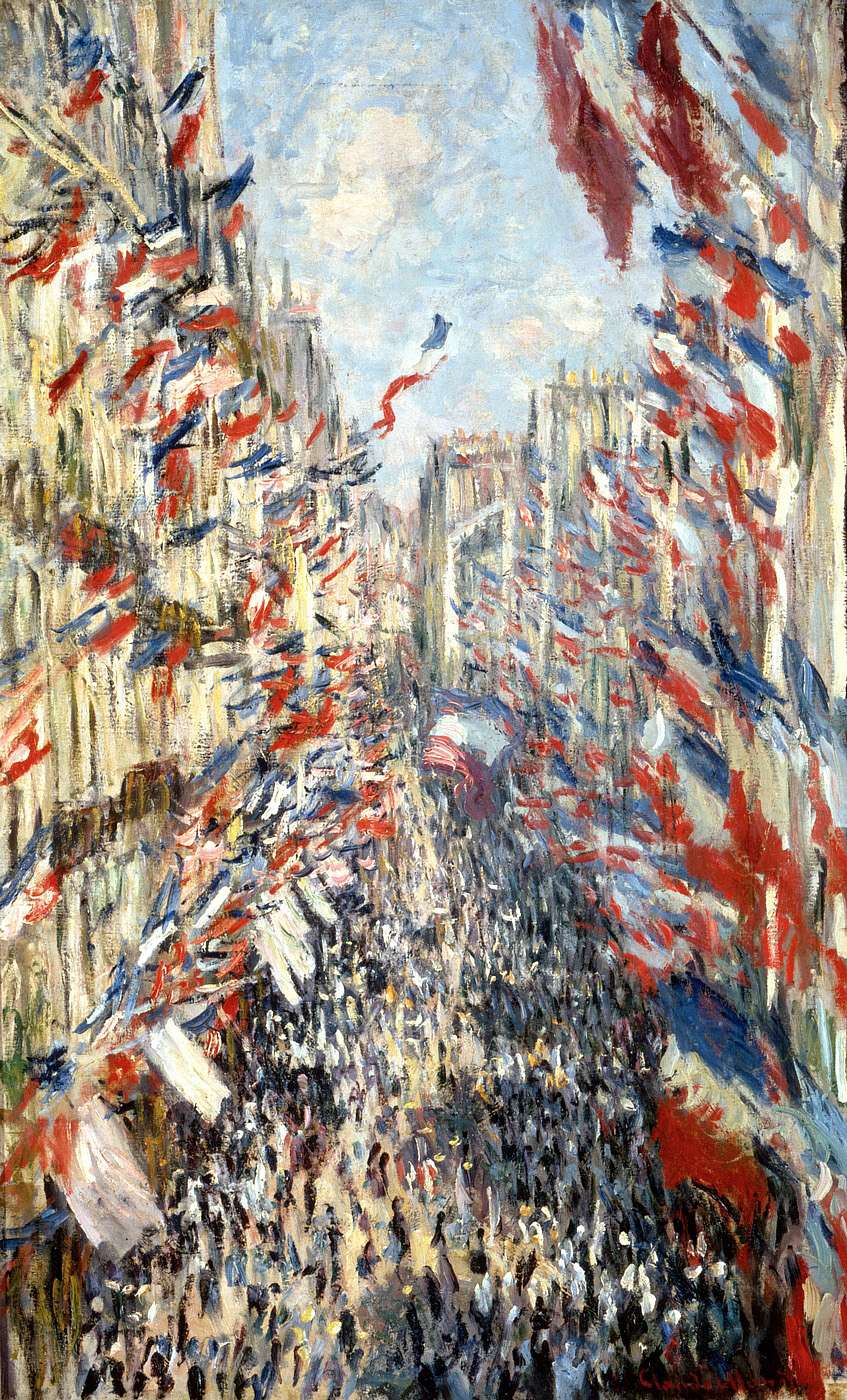
Rue Mosnier with Flags, by Edouard Manet (1878):

Which other countries have a red, white and blue flag?
You will find a great number of national flags around the world with the colours red, white and blue.
For example:
The United Kingdom
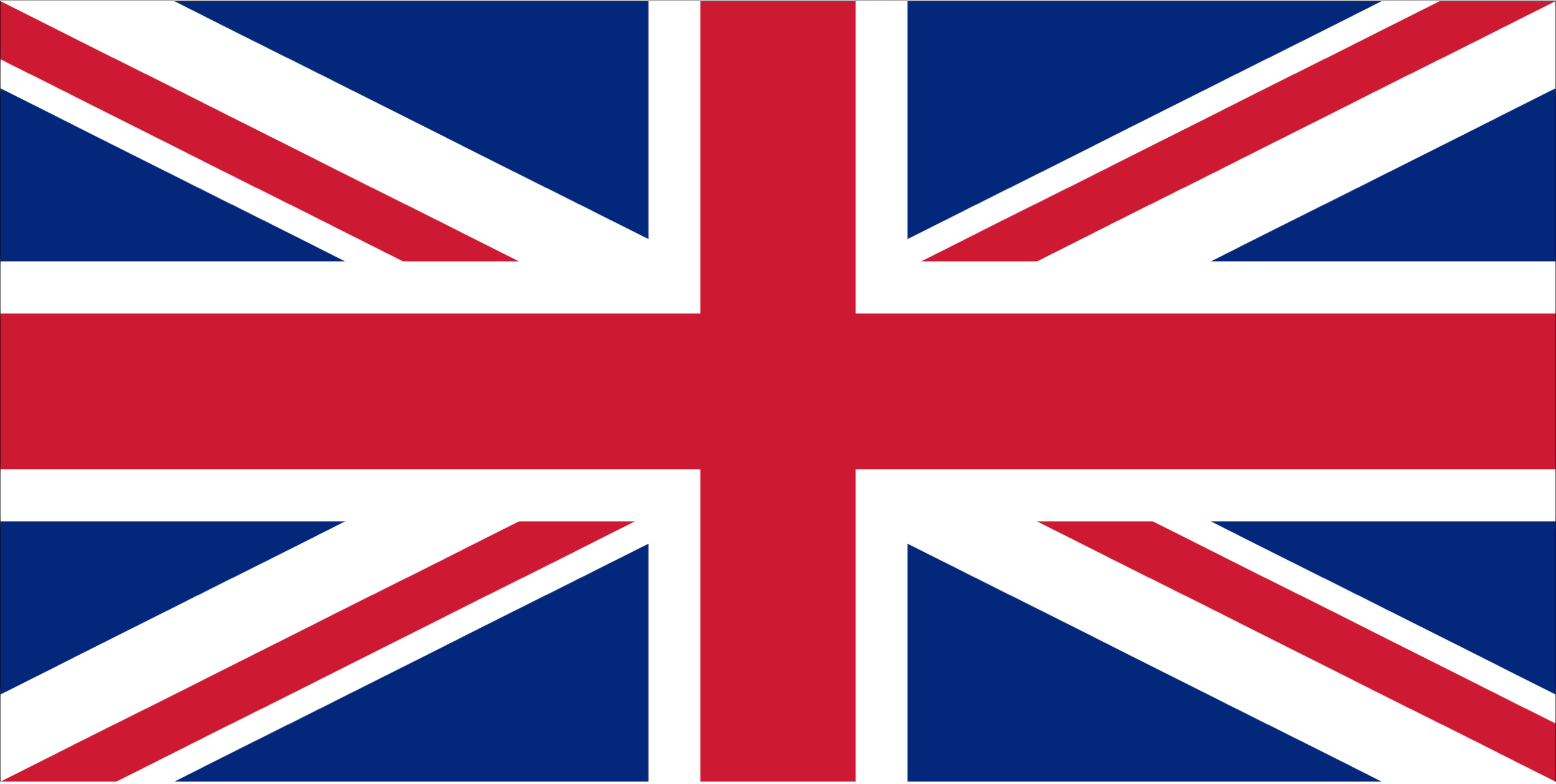
The flag is also known as the Union Jack. It consists of a superposition of three flags: the red cross of Saint George (England), the Cross of Saint Patrick (Ireland), and the Saltire of Saint Andrew (Scotland). Interestingly the Union Jack does not represent Wales. The reason is that the country was already part of the Kingdom of England when the flag was designed in 1801.
A few Commonwealth states also share the same colours: Australia, Fiji, New Zealand, Tuvalu.
The United States of America

The Star-Spangled Banner consists of thirteen equal horizontal stripes, red alternating with white. A blue rectangle bears fifty small white stars representing the 50 states of the USA.
The US flag was flown outside the United States for the first time in Paris at the occasion of the Fête de la Fédération on 14 July 1790 (now referred to as Bastille Day). A delegation from the United States was present at the Paris celebration led by John Paul Jones, founder of the US Navy.
Other European countries who have a red, white and blue flag (which is also a common combination in Slavic countries – the Pan-Slavic colours):
Croatia
The flag of Croatia was adopted in December 1990. It consists of three equal horizontal stripes of red, white and blue. The Coat of arms of Croatia is found in the middle of the flag.
Czech Republic
The first flag of Czechoslovakia was white and red (the colours of the flag of Bohemia) and was similar to the flag of Poland. To distinguish the Czech flag from it, a blue triangle was added in 1920.
Luxembourg
With its three horizontal stripes, it is almost identical to the flag of the Netherlands. The main differences consist of the blue stripe that displays a much lighter shade. Also, the flag is longer (proportion 3:5)
The Netherlands
This is the world’s oldest tricolour flag still in national use (1575). It is believed to have influenced the French national flag.
Iceland
Adopted in 1915, the flag of Iceland is based on the Scandinavian Cross… it is a reverse colour of the flag of Norway!
Norway
Adopted in 1921, the flag of Norway is based on the Scandinavian Cross outlined in white.
Slovakia
Adopted in September 1992, the flag of Slovakia is designed with the traditional Pan-Slavic colours (red, white and blue). It includes the Slovakian arms with a dominant white cross rising above blue mountains (blue being the symbolic colour of Europe).
Russia
The flag of Russia (adopted in August 1991) is a combination of the three Pan-Slavic colours.
Serbia
The flag of Serbia has the same colours as the Russian flag… except that they are reversed! The three horizontal bands of red, blue and white are topped with the Coat of arms of Serbia.
Slovenia
Adopted in June 1991, the flag of Slovenia consists of white, blue and red bands with the country’s Coat of arms.
► For more in-depth info about the national flag of France, check out the article on Wikipedia.
► Or read this article [in French] from the official website of the French Presidency.
Inspired? Pin it for later:
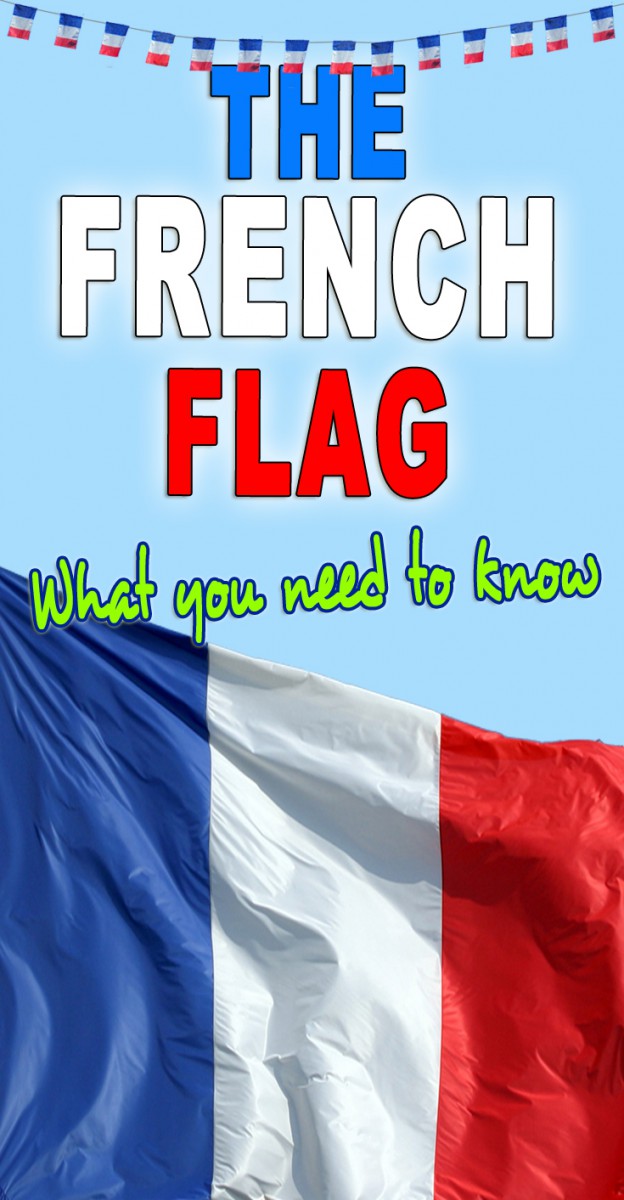

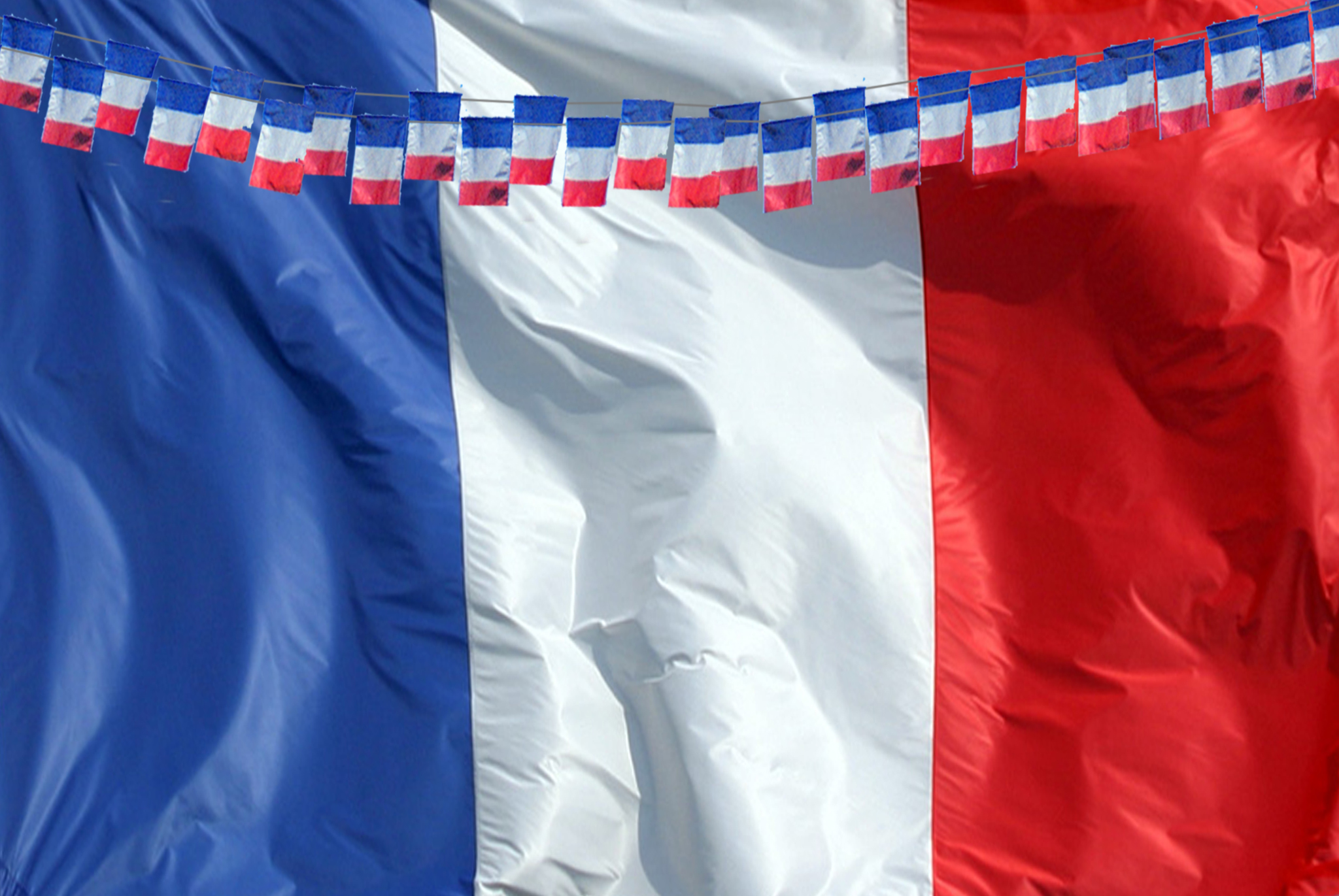

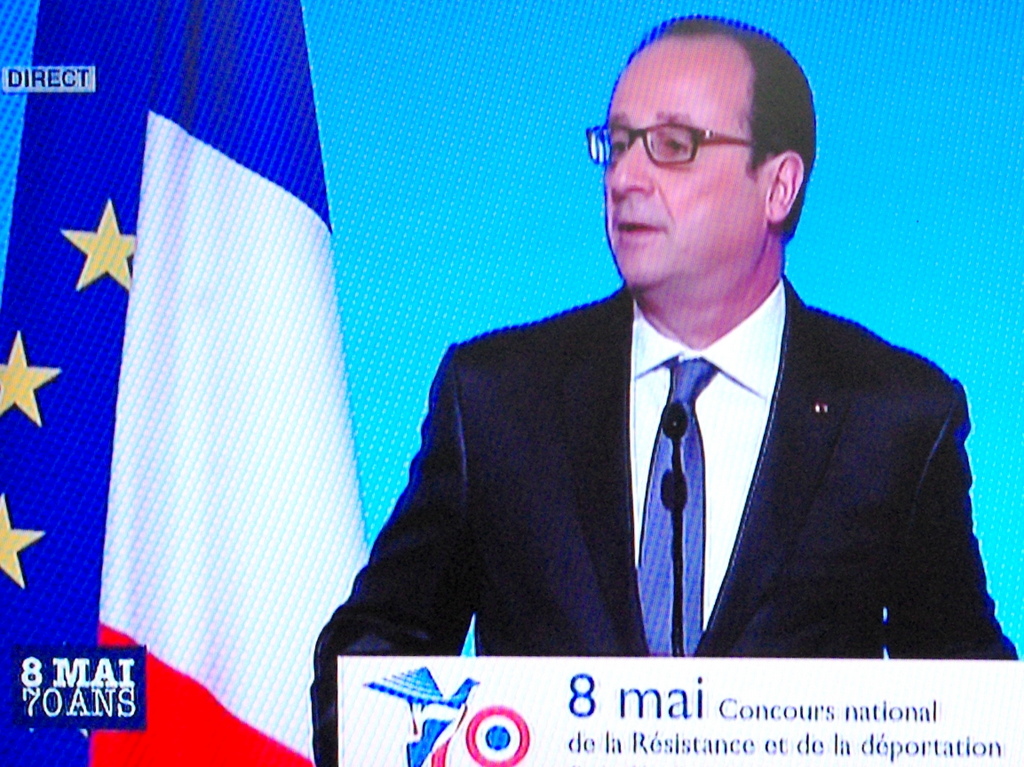


RESTORATION is the correct spelling.
After the defeat of Napoleon I in 1815, the RESTAURATION of the Bourbon dynasty replaced the Tricolour by a white flag.
Of course it is! Thanks for pointing this out! Just corrected it ?